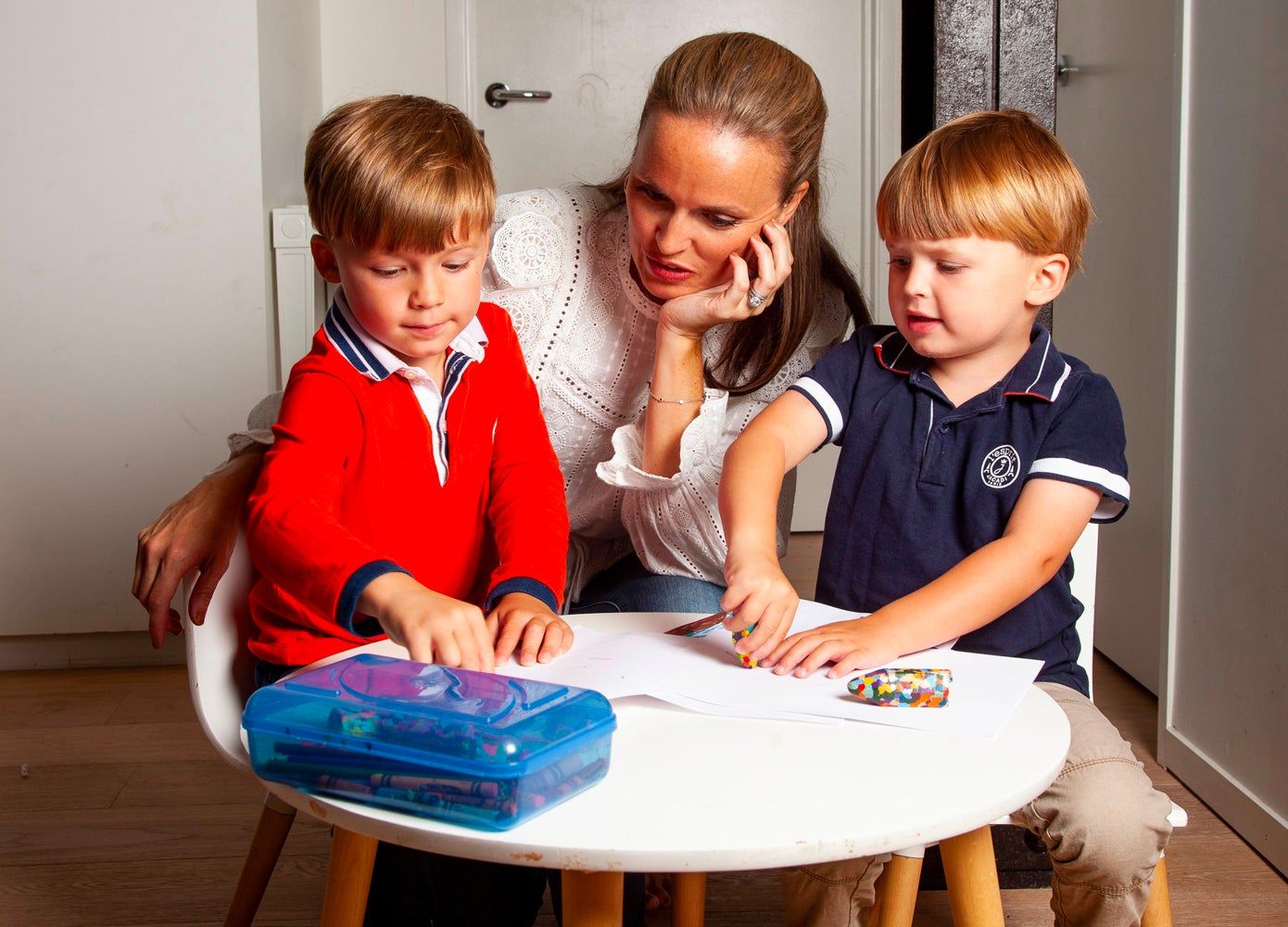
Arts & Crafts
Sally King McBride on Making Kids Feel at Home With Art
Sally King McBride worked at The Met for over ten years before launching her brand of Alphabet Art, The Letter Nest. Here, she shares how the experience inspired her approach to introducing children to art and tips for finding art in less expected places.
- Written By
- Sally King McBride
Over the ten years I worked at The Met, I witnessed a number of firsts–from the first time the Museum posted on Instagram to the first time in 40 years it reopened its doors seven days a week. The institution was becoming a more welcoming one, cultivating an emphasis on accessibility to art for all.
This decade coincided with the profound personal firsts of my early twenties and thirties, many of which occurred in the actual Museum: first job, first heartbreak, first date with my now-husband, and down the street at Lenox Hill, my first child.
Internalizing this evolving outlook over my years at The Met eventually informed my approach to introducing art to my young children—not only in building my confidence to bring them to the Museum but also in renewing my conviction that art is for everyone.
Conversation
My favorite concept in illustration is "inviting the child in" from an essay by Anne Sibley O'Brien. Where is the entry-point in the image or artwork to spark a child's imagination? Art is the ideal conversation starter, with no real age requirements and no wrong answers. At my old work events, often evening receptions in the galleries, inviting people in was made much easier by the common ground of the art in the room.
Keep it simple
Friends assume from my daily work that my home is filled with complicated arts & crafts, but crayons, pencils, and paper, accessibly stored, are my go-to art supplies. I also love witnessing other household items becoming departure points for creativity: no pillow, cardboard box, or bedsheet is safe.
Color within the line, sometimes
My sons are still little, so I try to combine prescriptive and productive art-making. Prescriptive could mean handing them a coloring book, allowing for creativity within a limit, while productive is having them invent from scratch. If they get stuck on where to start, I suggest a shape or letter. I'll see where 'X' can take them: a snowflake, a star, a buried treasure, a tree branch.
Connection
This is somewhat age- and safety-dependent, but hang the art where your kids can experience it, whether over the changing table or by extending a gallery wall with a few lower artworks. On my living room wall: fine art at the top; Alphabets towards the bottom, within view (and grasp!) of my kids. A child viewing art is accessing imagination—both the artist's and their own.
Children's Books
For a budding artist, a book collection is her source of inspiration. While there's no need to pile on the extensive evidence of positive outcomes of children's access to books at home, there are specific perks for a young artist:
The artistry of the books themselves, each one is a teaching tool for anyone just learning their craft. The exposure to technique—whether it's the cross-hatching of Maurice Sendak, the scratchboard by Beth Krommes, or the collage of Christian Robinson—can be taught by holding a book in one's lap. For me, the study of picture books extended long beyond childhood, often finding me during my early Museum lunchbreaks studying the children's section of Barnes & Noble (which little did I know, many years later, would become a retreat for me and every other desperate city parent on rainy weekends).
The introduction to a profession. My Aunt Sara, a longtime children's book author, first introduced me to the idea of a creative profession. Understanding the role of an illustrator from a young age convinced me that this was a viable goal to strive for.
The conventions of story-telling. Within picture books, a "counter-melody" is a storyline told only by the images that complements the main narrative. A young artist's exposure to this kind of visual power—in tandem with and in counterpoint to words—is a gift beyond measure.
Collecting can be a wonderful creative expression, particularly for those children who prefer not to hold a paintbrush. Whether it's stickers, rocks, stamps, coins, postcards, or children's books, the collecting process helps build foundational skills: gathering, editing, imagining, researching, story-telling. My current collections, from party dresses to paintbrushes, compete for real estate in our city apartment, where a steadily growing representation of my sons' artwork is starting to fill our wall–some in frames, some in crayon-marks.
Sally King McBride is a New York Cit y-based artist who worked at The Met for over ten years before launching her brand of Alphabet Art, The Letter Nest. Her work has been featured in Vogue, Glamour, Architectural Digest, and House Beautiful, and she's a 2021 Tory Burch Foundation Fellow.